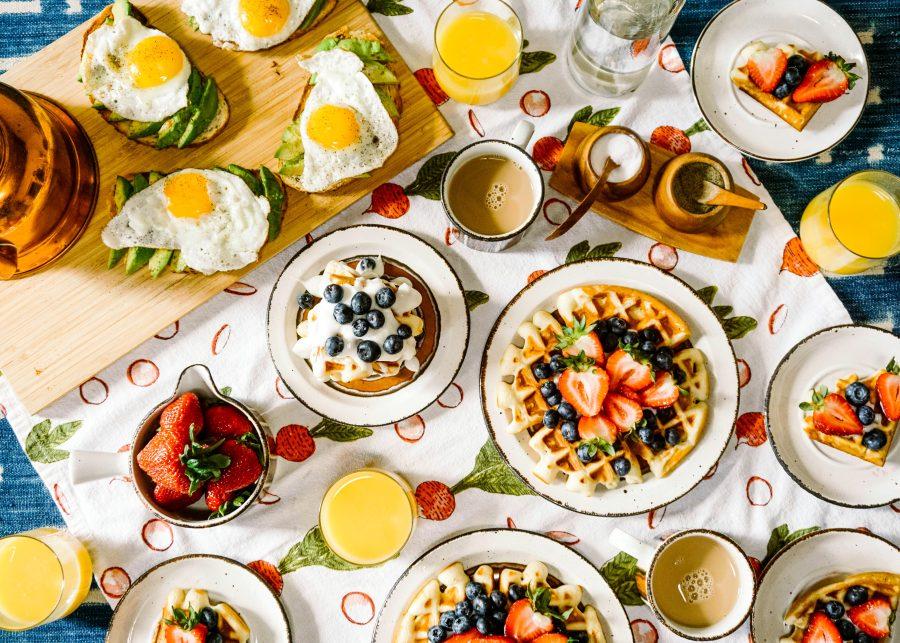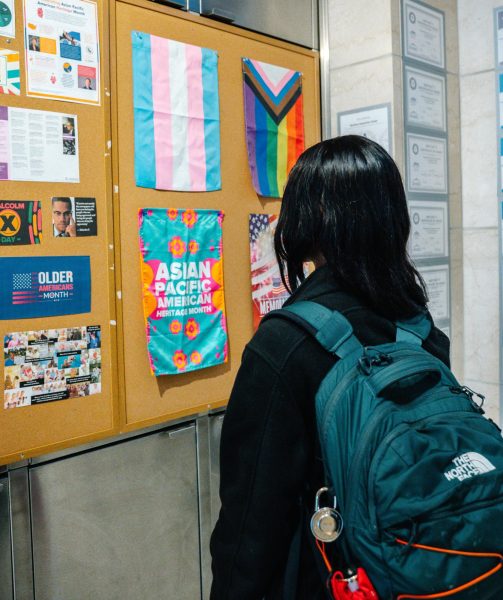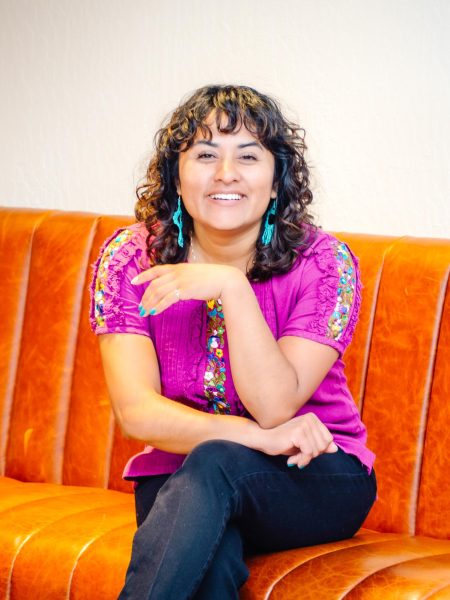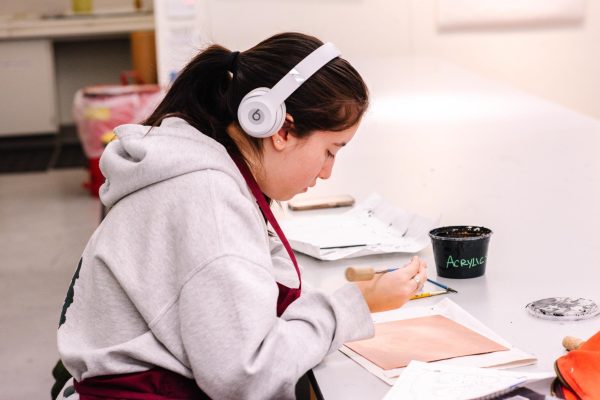Culinary uprising: Younger generations’ obsession with cooking videos
November 11, 2021
Open TikTok, Instagram or even Twitter for more than five minutes and a cooking video is bound to grace your scrolling. Whether it’s a peaceful video of someone preparing their meal, a mom making their child’s lunch the night before school or a gimmicky video filled with edits and jump cuts, cooking content has dominated the social media sphere. However, as this content soars, the interest in learning to cook amongst younger generations has decreased.
The hashtag #CookingTikTok has over 2 billion views on TikTok, with similar numbers on Instagram’s cooking hashtag as well. These videos range from basic home cooking from all cultures, to high class meals, to extravagantly designed meats and cheeses no person would reasonably make on a daily basis. In addition to this, new television shows continue to pop up each day with a variety of topics around cooking—baking shows with peaceful music, cutthroat culinary competitions or tours of restaurants around the world—across a variety of streaming services and television channels.
The latest culprit to TikTok fame has been Emily Mariko—and more specifically, her salmon bowls, which play off her Asian heritage in a way that reuses her leftovers in a delicious and healthy way. Although, her entire account has skyrocketed in popularity. Other popular food items have been the whipped coffee—or Dalgona, as it’s properly known—from the beginning of the pandemic, as well as cloud bread from that time and feta pasta. However, none have amounted to the fame that Emily Mariko has.
Though Mariko’s content contains much of the similar lifestyle videos—grocery shopping, cooking, going to get takeout—her videos do worlds better than other content. This may be because of the little to no dialogue in her videos, which allows for her videos to be watched by people all over the world. In addition to this, her videos are relaxing and methodical, allowing those who watch them to zone out and focus on her preparing food or running errands. Finally, Emily Mariko’s TikTok shows her eating food the average person eats—such as In-N-Out or pastries from a bakery—in combination with her healthy, yet manageable, lifestyle. As Emilia Petrarca for The Cut writes:
“‘She’s eating real food,’ said the Cut’s beauty director, Kathleen Hou. ‘I think it’s the start of a new type of wellness. Less lemon water. Hot girls drink regular milk, but they also eat bread.’ Sure, Mariko eats a lot of farmers’-market veggies and enviably fresh-looking California avocados. ‘But she looks like she actually has balance,’ Hou continued. ‘Like, she eats Philadelphia cream cheese. I can’t remember the last time any wellness featured cream cheese.’” (1)
In addition to Emily Mariko, cooking shows have thrived amongst the younger generations as well. British Broadcasting Corporation’s hit reality baking show “The Great British Baking Show”—also known as “The Great British Bake Off”—has always been popular in the States, however over the past few years the series has blown up in popularity. With its soft, pastel colors, peaceful music, quirky hosts with fun banter, creative weekly themes and delicious desserts, it’s understandable as to why. As Meredith Blake for the Los Angeles Times said:
“Contestants never say things like ‘I didn’t come here to make friends.’ There are no irritating product placements and—perhaps most incomprehensibly to American audiences—no material riches to be won. That’s right: The winner of ‘The Great British Baking Show’ wins a title and an engraved cake stand, and that’s it.” (2)
For many young people, the serenity of “The Great British Baking Show”, as well as the show’s lack of material prizes, can be used as an escape. Even the most inept baker can be quoted commenting on bakers’ choices in the show, as seen by the hundreds—if not thousands—of tweets on Twitter. While American shows feature cash prizes and fame, the winner of “The Great British Bake Off” and its American counterpart only get the title of winning the show and a usable piece.
With all this content, many would think young people have been inspired to get away from their screens and get into the kitchen. However, this can be far from the truth. Many young people gravitate towards pre-prepped foods and would rather eat processed meals than learn to cook, even if they have the time and resources. As Erin Magner for Well and Good said:
“The 23-to-38-year-old set also allocates less time to meal prep than their older counterparts—around just 13 minutes per day, which adds up to nearly an hour less per week than Gen X—and when they do head to the grocery store, they spend more on prepared foods, pasta and sweets than other age groups.” (3)
Though, this reasoning may be in part due to the fast-paced lifestyle the younger generations lead—work, school, extracurriculars and whatever else—as well as the fact that Millennials and Generation Z possibly did not have family members to teach them to cook. These younger generations most likely had both parents entering the workforce at some point in their lives, possibly with full-time jobs, making it hard to learn how to cook beyond basic survival. Without other family members, or a true passion for food, this basic survival would continue later into life, resulting in the statistics seen in modern day.
Whether the younger generations consume their cooking content from the Internet or preparing food in their own kitchens, culinary videos and media remain a crucial part of pop culture. In the next week, social media may have its next Emily Mariko, and some new cooking show will take the world by storm, and when they do, the younger generations will be there to eat it up—metaphorically and literally.
(1) https://www.thecut.com/2021/09/why-are-emily-marikos-tiktok-videos-so-popular.html
(2) https://www.latimes.com/entertainment/tv/la-et-st-great-british-baking-show-mary-berry-leaving-20160922-snap-story.html
(3) https://www.wellandgood.com/home-cooking-decline/






























































